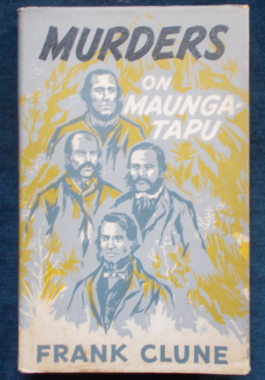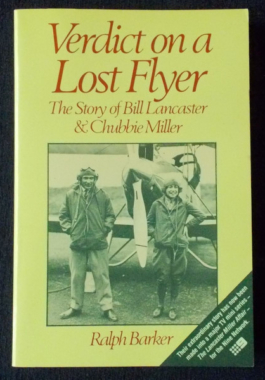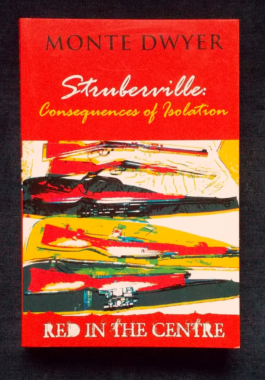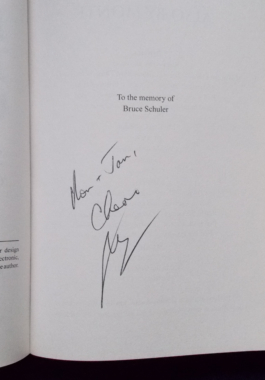- Sorry, this product is unavailable.
-
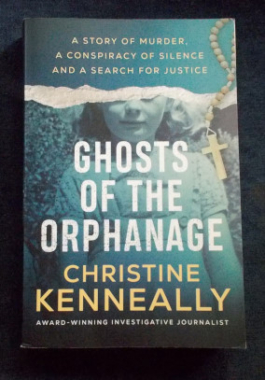 This is the shocking secret history of twentieth-century orphanages - which for decades hid violence, abuse, and deaths within their walls. For much of the twentieth century, a series of terrible events - abuse, both physical and psychological, and even deaths - took places inside orphanages. The survivors have been trying to tell their astonishing stories for a long time, but disbelief, secrecy, and trauma have kept them from breaking through. For ten years, Christine Kenneally has been on a quest to uncover the harrowing truth. Centering her story on St. Joseph’s, a Catholic orphanage in Vermont, Kenneally has written a stunning account of a series of crimes and abuses. But her work is not confined to one place. Following clues that take her into the darkened corners of several institutions across the globe, she finds a trail of terrifying stories and a courageous group of survivors who are seeking justice. Ghosts of the Orphanage is an incredible true crime story and a reckoning with a past that has stayed buried for too long, with tragic consequences.
This is the shocking secret history of twentieth-century orphanages - which for decades hid violence, abuse, and deaths within their walls. For much of the twentieth century, a series of terrible events - abuse, both physical and psychological, and even deaths - took places inside orphanages. The survivors have been trying to tell their astonishing stories for a long time, but disbelief, secrecy, and trauma have kept them from breaking through. For ten years, Christine Kenneally has been on a quest to uncover the harrowing truth. Centering her story on St. Joseph’s, a Catholic orphanage in Vermont, Kenneally has written a stunning account of a series of crimes and abuses. But her work is not confined to one place. Following clues that take her into the darkened corners of several institutions across the globe, she finds a trail of terrifying stories and a courageous group of survivors who are seeking justice. Ghosts of the Orphanage is an incredible true crime story and a reckoning with a past that has stayed buried for too long, with tragic consequences. -
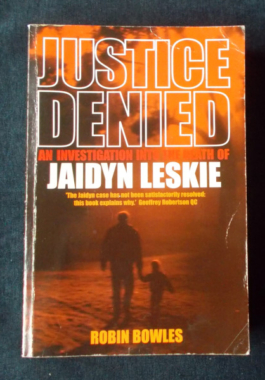 This is the book the Victorian police did not want written. On 14 June 1997, a toddler is left alone in the middle of the night while the babysitter collects his mother from a party. In their absence, the windows are smashed and a severed pig's head is thrown into the room where the child was left sleeping. On their return, the pig's head is is waiting and the child has vanished. Within twenty-four hours the Homicide Squad rules out any involvement of the 'pig's head team' (the vandals who left the pig's head and smashed the windows, determined by police to be an unrelated act of revenge against Domaszewicz) or anyone else in the baby's disappearance and settles on the babysitter as the prime suspect. The child was Jaidyn Leskie. The suspect, Greg Domaszewicz, was arrested, charged and eventually acquitted of murdering Jaidyn. Case closed - or is it? Featuring exclusive interviews and evidence made public for the first time, this is a tightly woven building of this unsolved mystery that builds to a conclusion that could leave the reader sleepless...Illustrated with black and white photos.
This is the book the Victorian police did not want written. On 14 June 1997, a toddler is left alone in the middle of the night while the babysitter collects his mother from a party. In their absence, the windows are smashed and a severed pig's head is thrown into the room where the child was left sleeping. On their return, the pig's head is is waiting and the child has vanished. Within twenty-four hours the Homicide Squad rules out any involvement of the 'pig's head team' (the vandals who left the pig's head and smashed the windows, determined by police to be an unrelated act of revenge against Domaszewicz) or anyone else in the baby's disappearance and settles on the babysitter as the prime suspect. The child was Jaidyn Leskie. The suspect, Greg Domaszewicz, was arrested, charged and eventually acquitted of murdering Jaidyn. Case closed - or is it? Featuring exclusive interviews and evidence made public for the first time, this is a tightly woven building of this unsolved mystery that builds to a conclusion that could leave the reader sleepless...Illustrated with black and white photos. -
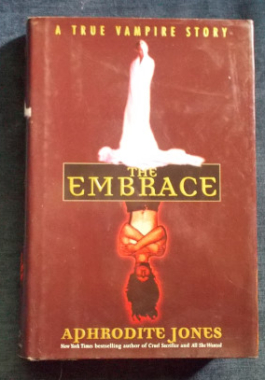
The Embrace: Aphrodite Jones
$20.00On November 25, 1996, in their home in the lakeside community of Eustis, Florida, Rick and Ruth Wendorf were savagely beaten to death with a tire iron. The Wendorfs' new Ford Explorer was stolen, but this was no routine robbery gone bad. This was a crime carried out by one Roderick Ferrell, a sixteen-year-old self-avowed Antichrist. His human sacrifice was a testament to the unique and sinister bond of four brainwashed teens. Heather Wendorf was a straight "A" student, a petite blonde with wide-set brown eyes. Yet she had been heard to wish her parents "off the face of the planet." Heather never dreamed that when she joined her friends for a joyride one fall evening, her wish had already come true. Including exclusive interviews with every living character involved in the case. -
 The Mafia murders that stunned Italy and how the killers were brought to justice...On 23 May 1992, the Mafia murdered its 'Number One Enemy', prosecutor Judge Falcone, with a motorway bomb that also killed his wife and three bodyguards. Fifty-seven days later, the Mafia also murdered Falcone's friend and colleague, Judge Borsellino, with a car bomb outside his mother's home that also killed five bodyguards. These murders changed forever the way that Italy views the Mafia. Based on interviews and the testimony of investigators, Mafia super grasses, survivors, relatives and friends, Vendetta recounts how the Mafiosi planned and carried out the murders and how the police hunted them down. Illustrated with black and white photographs.
The Mafia murders that stunned Italy and how the killers were brought to justice...On 23 May 1992, the Mafia murdered its 'Number One Enemy', prosecutor Judge Falcone, with a motorway bomb that also killed his wife and three bodyguards. Fifty-seven days later, the Mafia also murdered Falcone's friend and colleague, Judge Borsellino, with a car bomb outside his mother's home that also killed five bodyguards. These murders changed forever the way that Italy views the Mafia. Based on interviews and the testimony of investigators, Mafia super grasses, survivors, relatives and friends, Vendetta recounts how the Mafiosi planned and carried out the murders and how the police hunted them down. Illustrated with black and white photographs. -
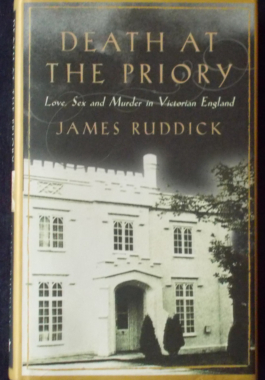 In 1875, beautiful, vivacious widow Florence Ricardo married Charles Bravo, a dashing barrister. The marriage seemed to be a happy one, although society gossips whispered that Bravo had married Florence for her fortune. Behind his charming public persona, Bravo was a brutal, vindictive man who dismissed his wife's devoted companion Mrs. Cox and regularly subjected Florence to violent abuse. Four months after the wedding, Bravo collapsed and for fifty-five hours - with some of London's most distinguished physicians in attendance - suffered a slow and agonising death. All the doctors agreed - he had been poisoned. The police were called in and everyone in the Priory, the house in South London in which he and Florence had lived, was under suspicion. The investigation was detailed and sensational and such was the public interest that it even eclipsed the coverage of the Prime Minister's negotiations with Egypt and the Prince of Wales' tour of India. The suspects included Mrs. Cox; George Griffiths, a coachman with a grudge against Bravo and at Florence Bravo herself. This is the recreation of the case with new evidence to conclusively prove who did kill Charles Bravo.
In 1875, beautiful, vivacious widow Florence Ricardo married Charles Bravo, a dashing barrister. The marriage seemed to be a happy one, although society gossips whispered that Bravo had married Florence for her fortune. Behind his charming public persona, Bravo was a brutal, vindictive man who dismissed his wife's devoted companion Mrs. Cox and regularly subjected Florence to violent abuse. Four months after the wedding, Bravo collapsed and for fifty-five hours - with some of London's most distinguished physicians in attendance - suffered a slow and agonising death. All the doctors agreed - he had been poisoned. The police were called in and everyone in the Priory, the house in South London in which he and Florence had lived, was under suspicion. The investigation was detailed and sensational and such was the public interest that it even eclipsed the coverage of the Prime Minister's negotiations with Egypt and the Prince of Wales' tour of India. The suspects included Mrs. Cox; George Griffiths, a coachman with a grudge against Bravo and at Florence Bravo herself. This is the recreation of the case with new evidence to conclusively prove who did kill Charles Bravo. -
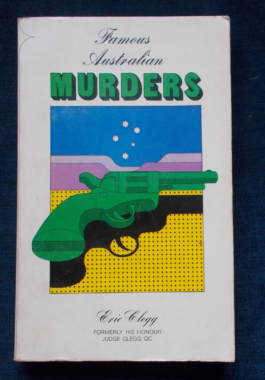 Eric Clegg, formerly His Honour Eric Clegg Q.C. is more than qualified to examine these famous trials and his expert viewpoint reveals many important and often controversial points which arose during the hearings. Cases contained in this volume include: The Kalgoorlie murders of two policemen in 1926, found down a disused mine-shaft; the Passionate Parson, acquitted on a charge of murdering his wife; the Lavers mstyery and the Sundown murders; the Pyjama Girl murder; the fantastic case of T. J. Ley, former Minister for Justice in New South Wales who was eventually convicted for the chalkpit murders and more. Illustrated with black and white photographs.
Eric Clegg, formerly His Honour Eric Clegg Q.C. is more than qualified to examine these famous trials and his expert viewpoint reveals many important and often controversial points which arose during the hearings. Cases contained in this volume include: The Kalgoorlie murders of two policemen in 1926, found down a disused mine-shaft; the Passionate Parson, acquitted on a charge of murdering his wife; the Lavers mstyery and the Sundown murders; the Pyjama Girl murder; the fantastic case of T. J. Ley, former Minister for Justice in New South Wales who was eventually convicted for the chalkpit murders and more. Illustrated with black and white photographs. -
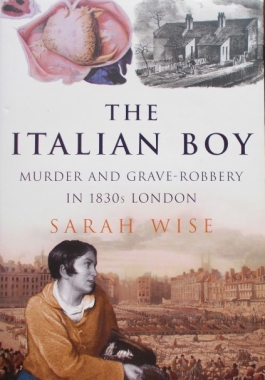
The Italian Boy: Sarah Wise
$30.00At the end of 1831, authorities unearthed a series of crimes at 3 Novia Scotia Gardens that appeared to be a copycat of the infamous Burke and Hare killings in Edinburgh only three years earlier. Soon three body-snatchers were on trial for providing the anatomy schools of London with suspiciously fresh bodies for dissection. They became famous as the London Burkers and their story was dubbed "The Italian Boy" case. The ensuing uproar forced legislation to end body-snatching in Britain. As well as covering the actual case, this book is a fascinating window on the lives of the poor of 1830s London. -
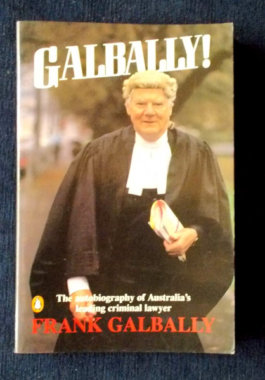
Galbally! Frank Galbally
$9.00Frank Galbally CBE (1922 - 2005) dominated Australian Law for over four decades, frequently at the centre of controversy and always at the heart of things. He represented everyone from painters and dockers to a talking cockatoo; had audiences with popes and took on the Greek Colonels and was embroiled in the politics of 1975 and the policies of Collingwood Football Club. The Krope trial, the Costigan Commission, Kevin Barlow's appeal...the number of legal trials in which Galbally was involved extraordinary and the names became household words. This autobiography contains some of his most famous cases, with a few fighting words regarding crucial aspects of Australian public affairs such as police corruption and the royal commission into crime. Illustrated with black and white photographs. -
 Two wives, two violent murders and a fight for justice...the story of one of the more bizarre murder investigations in Australia’s history. Two wives die in suspicious co-incidence or, as husband Thomas Keir describes it, ‘bad luck’? Three years after Thomas Keir alleged his first wife Jean deserted him and her young son for another man, his second wife Rosalina, Jean’s cousin, lay scorched and strangled on her bed. Arriving on the scene, Detective Peter Seymour realised he was dealing with the world’s unluckiest husband or a serial wife killer.While Keir was remarkably found ‘not guilty’ of Rosalina’s murder - despite a clear cut case - her death unlocked the mystery of Jean’s disappearance. A subsequent police investigation lead to the discovery of seven small fragments of Jean’s bones - fingers, knuckles and toes - buried deep under the same house in which Rosalina died. Keir’s ‘grieving husband’ act was suddenly in question. The investigation revealed Thomas Keir was a man so jealous he hated even his own baby son touching his wife, Jean. A man so possessive he threatened he would cut her up and feed her to the dogs if she ever left him. A man who thought he could commit the perfect crime and publicly taunted the police through the media. This is Detective Peter Seymour's relentless pursuit of justice and his own family sacrifices, through the drama of the police investigation into Jean’s death, and the three trials, convictions, and appeals that would take fifteen years to reach their final conclusion. Photograph illustrations.
Two wives, two violent murders and a fight for justice...the story of one of the more bizarre murder investigations in Australia’s history. Two wives die in suspicious co-incidence or, as husband Thomas Keir describes it, ‘bad luck’? Three years after Thomas Keir alleged his first wife Jean deserted him and her young son for another man, his second wife Rosalina, Jean’s cousin, lay scorched and strangled on her bed. Arriving on the scene, Detective Peter Seymour realised he was dealing with the world’s unluckiest husband or a serial wife killer.While Keir was remarkably found ‘not guilty’ of Rosalina’s murder - despite a clear cut case - her death unlocked the mystery of Jean’s disappearance. A subsequent police investigation lead to the discovery of seven small fragments of Jean’s bones - fingers, knuckles and toes - buried deep under the same house in which Rosalina died. Keir’s ‘grieving husband’ act was suddenly in question. The investigation revealed Thomas Keir was a man so jealous he hated even his own baby son touching his wife, Jean. A man so possessive he threatened he would cut her up and feed her to the dogs if she ever left him. A man who thought he could commit the perfect crime and publicly taunted the police through the media. This is Detective Peter Seymour's relentless pursuit of justice and his own family sacrifices, through the drama of the police investigation into Jean’s death, and the three trials, convictions, and appeals that would take fifteen years to reach their final conclusion. Photograph illustrations. -
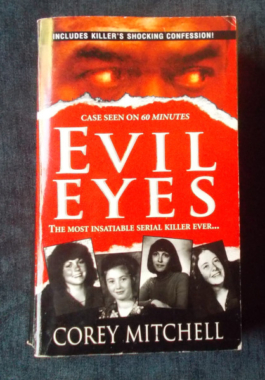 In Houston, Texas, on the morning of May 23, 1982, Carl 'Coral' Eugene Watts, 28, trapped two young women in their apartment. Only hours before, he'd killed another woman by drowning her in her bathtub. As Watts attempted to do the same to 20-year-old Lori Lister, her roommate Melinda Aguilar, 18, made a daring escape. Her courage led to Watts's arrest. Watts was a sadistic slayer with a lust for killing in a variety of ways: strangulation, suffocation, drowning and stabbing. He confessed to thirteen murders, but with no direct evidence to link him to the crimes, he managed to plea bargain his sentence down to 60 years for burglary. Due to a flaw in the Texas criminal justice system, Watts was supposed to be released from prison in 2006. Through the ceaseless efforts of investigators and the mother of one of his victims, Watts was finally tried and convicted to life in prison for a murder he had committed in Michigan in 1979. He died in 2007, still the prime suspect in approximately 90 other slayings. Experts theorise that Watts may have slain more than Ted Bundy, Jeffrey Dahmer, and John Wayne Gacy...combined. Here is the chilling story of how he almost got away with murder. Illustrated with black and white photographs.
In Houston, Texas, on the morning of May 23, 1982, Carl 'Coral' Eugene Watts, 28, trapped two young women in their apartment. Only hours before, he'd killed another woman by drowning her in her bathtub. As Watts attempted to do the same to 20-year-old Lori Lister, her roommate Melinda Aguilar, 18, made a daring escape. Her courage led to Watts's arrest. Watts was a sadistic slayer with a lust for killing in a variety of ways: strangulation, suffocation, drowning and stabbing. He confessed to thirteen murders, but with no direct evidence to link him to the crimes, he managed to plea bargain his sentence down to 60 years for burglary. Due to a flaw in the Texas criminal justice system, Watts was supposed to be released from prison in 2006. Through the ceaseless efforts of investigators and the mother of one of his victims, Watts was finally tried and convicted to life in prison for a murder he had committed in Michigan in 1979. He died in 2007, still the prime suspect in approximately 90 other slayings. Experts theorise that Watts may have slain more than Ted Bundy, Jeffrey Dahmer, and John Wayne Gacy...combined. Here is the chilling story of how he almost got away with murder. Illustrated with black and white photographs. -
 The case of Dr. Crippen has passed into folklore as one of the most infamous in criminal history. The year: 1910. The details: a hideously mutilated body in the cola cellar, a dockside arrest in Canada - by the means of the new wireless telegraph - of Crippen and his mistress, disguised as a boy, the trial with legal luminaries and society notables. There was enough sensation to place Crippen in the top ranks of master criminals. Yet Crippen was a quiet, meek little man, a hen-pecked husband who was always gentle with his shrewish wife, a business failure passionately in love with his competent young secretary, a bungler whose one venture into murder went wrong at every step of the way. This study examines the character of the man many believed incapable of murder and reveals the story of a mismatched marriage and a love affair that - out of its context - would have been an inspiration. Illustrated with black and white photographs. Appendix reproduces Crippen's letters to Ethel LeNeve, written from Pentonville Prison.
The case of Dr. Crippen has passed into folklore as one of the most infamous in criminal history. The year: 1910. The details: a hideously mutilated body in the cola cellar, a dockside arrest in Canada - by the means of the new wireless telegraph - of Crippen and his mistress, disguised as a boy, the trial with legal luminaries and society notables. There was enough sensation to place Crippen in the top ranks of master criminals. Yet Crippen was a quiet, meek little man, a hen-pecked husband who was always gentle with his shrewish wife, a business failure passionately in love with his competent young secretary, a bungler whose one venture into murder went wrong at every step of the way. This study examines the character of the man many believed incapable of murder and reveals the story of a mismatched marriage and a love affair that - out of its context - would have been an inspiration. Illustrated with black and white photographs. Appendix reproduces Crippen's letters to Ethel LeNeve, written from Pentonville Prison. -

The scene awaiting the policemen entering the charming suburban house at 313 Carl Drive was one they would never forget. Three children and their mother had been hacked to death in their beds, the sheets and walls soaked in blood. A butcher knife and an axe lay nearby. There appeared to be no physical evidence and the detective at first suspected a bungled robbery. But as the clues were sifted and family members and friends were questioned, an appalling possibility presented itself: Could David Hendricks, grief-stricken father, away on a business trip, have methodically killed his family before he left? And why would a successful business man and devoted member of a fundamentalist religious group want his entire family eliminated? The prosecution painted a much darker picture of David Hendricks...Convicted by his first jury, awarded a new trial, a second jury concluded that Hendricks had not been proven guilty - beyond a reasonable doubt. Illustrated with black and white photos.
-
 The name of Gary Heidnik will live on in infamy, and his home at 3520 North Marshall Street in Philadelphia, is a house tainted with the memory of unbelievable horrors. What police found there was an incredible nightmare made real. Four young women had been held captive - some for months - half-naked and chained. They had been tortured, starved, and repeatedly raped. But more grotesque discoveries lay in the kitchen: human limbs frozen, a torso burned to cinders, an empty pot suspiciously scorched...This is not a story for the faint-hearted; this is a shocking true account of the self-proclaimed minister with a long history of mental illness, who preyed upon the susceptible and the retarded in a bizarre plan to create his own "baby factory." It is a macabre web spun around money, power and religion, tangled with courtroom drama and lawyers' tactics, sure to send a chill into your very soul. Illustrated with black and white photographs.
The name of Gary Heidnik will live on in infamy, and his home at 3520 North Marshall Street in Philadelphia, is a house tainted with the memory of unbelievable horrors. What police found there was an incredible nightmare made real. Four young women had been held captive - some for months - half-naked and chained. They had been tortured, starved, and repeatedly raped. But more grotesque discoveries lay in the kitchen: human limbs frozen, a torso burned to cinders, an empty pot suspiciously scorched...This is not a story for the faint-hearted; this is a shocking true account of the self-proclaimed minister with a long history of mental illness, who preyed upon the susceptible and the retarded in a bizarre plan to create his own "baby factory." It is a macabre web spun around money, power and religion, tangled with courtroom drama and lawyers' tactics, sure to send a chill into your very soul. Illustrated with black and white photographs. -

The Butchers: Brian Lane
$6.00What is the most effective way to dispose of a troublesome corpse? Eat it? Dip it in a vat of acid? Feed it to the pigs - or turn it into sausages? Just pop it in a furnace, maybe...? There's more than thirty cases here: from Catherine Hayes who set a trend in dismemberment in 1726 when she hacked off her husband's head and tossed it into the Thames, to Dennis Nilson who was doing much the same to his victims in 1983; from Marcel Petiot's quicklime pits in Occupied Paris, to New York's infamous Albert 'The Cannibal' Fish. Yet however meticulous and ingenious, none of them got away with it - painstaking investigation and forensics led to the final unmasking of the sadists and psychotics who sought such bloody concealment of their crimes. With black and white photographs. -
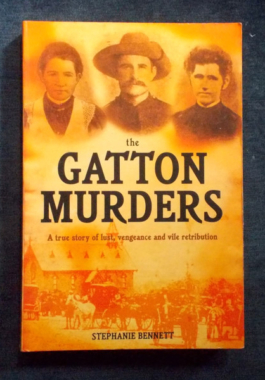 Boxing Day, 1898. Three members of the Murphy family - Michael, Ellen and Norah — are returning to the family farm after a trip in to Gatton, a small town west of Brisbane. On a deserted, moonlit road a few miles out of town they are ambushed. Their horse is killed and the three young people are taken to a remote paddock where the women are brutally raped and bludgeoned to death - and Michael is shot. By the time the police arrived the following day, locals had swarmed all over the crime scene, obliterating the evidence. What followed was a hopelessly bungled investigation and the crime remained unsolved. Fear and mistrust rocked the farming community. Theories about the perpetrator abounded. Was this the work of a sex-crazed tramp? Could a member of the Murphy family have been involved - or was revenge the motive? Stephanie Bennett's detailed examination of this baffling crime after many years spent scouring the available archival material, interviewing relatives of suspects and victims and visiting far flung areas of Queensland brings a new and disturbing theory to the surface that is both chilling and challenging. Queensland's most infamous unsolved murder.
Boxing Day, 1898. Three members of the Murphy family - Michael, Ellen and Norah — are returning to the family farm after a trip in to Gatton, a small town west of Brisbane. On a deserted, moonlit road a few miles out of town they are ambushed. Their horse is killed and the three young people are taken to a remote paddock where the women are brutally raped and bludgeoned to death - and Michael is shot. By the time the police arrived the following day, locals had swarmed all over the crime scene, obliterating the evidence. What followed was a hopelessly bungled investigation and the crime remained unsolved. Fear and mistrust rocked the farming community. Theories about the perpetrator abounded. Was this the work of a sex-crazed tramp? Could a member of the Murphy family have been involved - or was revenge the motive? Stephanie Bennett's detailed examination of this baffling crime after many years spent scouring the available archival material, interviewing relatives of suspects and victims and visiting far flung areas of Queensland brings a new and disturbing theory to the surface that is both chilling and challenging. Queensland's most infamous unsolved murder. -
 Neighbors were unaware of what went on behind the tightly closed doors of a house in Fresno, California - the home of the imposing, 300-pound Marcus Wesson, his wife, children, nieces and grandchildren. But on March 12, 2004, gunshots were heard inside the Wesson home and police officers, responding to what they believed was a routine domestic disturbance, were horrified by the senseless carnage they discovered when they entered. This is a chilling true story of incest, abuse, madness and murder - it is one family's terrible and ultimately fatal ordeal at the hands of a powerful, manipulative man - a cultist who envisioned vengeful gods and vampires, and totally controlled those closest to him before their world came to a brutal and bloody halt. Illustrated with black and white photos.
Neighbors were unaware of what went on behind the tightly closed doors of a house in Fresno, California - the home of the imposing, 300-pound Marcus Wesson, his wife, children, nieces and grandchildren. But on March 12, 2004, gunshots were heard inside the Wesson home and police officers, responding to what they believed was a routine domestic disturbance, were horrified by the senseless carnage they discovered when they entered. This is a chilling true story of incest, abuse, madness and murder - it is one family's terrible and ultimately fatal ordeal at the hands of a powerful, manipulative man - a cultist who envisioned vengeful gods and vampires, and totally controlled those closest to him before their world came to a brutal and bloody halt. Illustrated with black and white photos. -
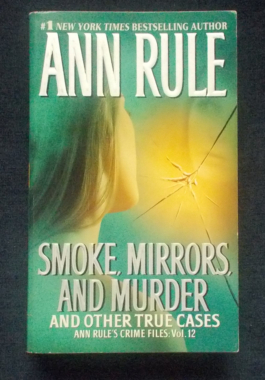 In some murder cases, the truth behind the most tragic of crimes crystallizes with relative ease. Not so with these fascinating accounts drawn from the personal files of Ann Rule, America's bestselling true-crime writer. What happens when the case itself becomes an intractable puzzle, when clues are shrouded in smoke and mirrors, and when criminals skillfully evade law enforcement in a maddening cat-and-mouse chase? An ideal family is targeted for death by the least likely enemy, who plotted their demise from behind bars.... A sexual predator hides behind multiple fake identities, eluding police for years while his past victims live in fear that he will hunt them down.... A modest preacher's wife confesses to shooting her husband after an argument -- but there's more to her shattering story than meets the eye - and more. Illustrated with black and white photographs.
In some murder cases, the truth behind the most tragic of crimes crystallizes with relative ease. Not so with these fascinating accounts drawn from the personal files of Ann Rule, America's bestselling true-crime writer. What happens when the case itself becomes an intractable puzzle, when clues are shrouded in smoke and mirrors, and when criminals skillfully evade law enforcement in a maddening cat-and-mouse chase? An ideal family is targeted for death by the least likely enemy, who plotted their demise from behind bars.... A sexual predator hides behind multiple fake identities, eluding police for years while his past victims live in fear that he will hunt them down.... A modest preacher's wife confesses to shooting her husband after an argument -- but there's more to her shattering story than meets the eye - and more. Illustrated with black and white photographs. -
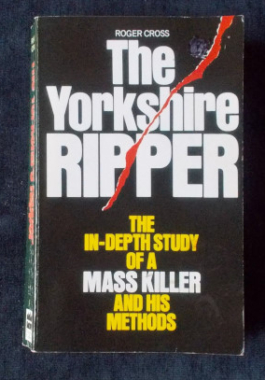 The author, the chief crime reporter for the Yorkshire Post worked on the sensational 'Yorkshire Ripper' case from the very beginning and was afforded the full co-operation and confidence of the Yorkshire Police. He delved deeply into every aspect of the case, interviewing, questioning and researching both Peter Sutcliffe's background, the strategies used and the problems encountered by the the police force assigned to catch him. Illustrated with black and white photographs.
The author, the chief crime reporter for the Yorkshire Post worked on the sensational 'Yorkshire Ripper' case from the very beginning and was afforded the full co-operation and confidence of the Yorkshire Police. He delved deeply into every aspect of the case, interviewing, questioning and researching both Peter Sutcliffe's background, the strategies used and the problems encountered by the the police force assigned to catch him. Illustrated with black and white photographs. -
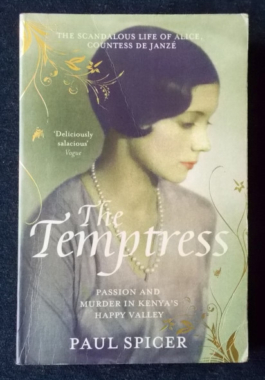 Alice de Janzé, glamorous American heiress, scandalised 1920's Paris when she left her aristocratic French husband for an English lover - whom she later tried to kill in a failed murder-suicide in the Gare du Nord. Abandoning Paris for the moneyed British colonial society known as Kenya's Happy Valley, she became the lover of the handsome womaniser, Joss Hay, Lord Erroll. In 1941, Erroll was found shot in his car on an isolated road. A cuckolded husband was brought to trial and acquitted... and the crime remained tantalizingly unsolved. The author's mother was one of Alice's confidantes, and after his mother's death found a wealth of Alice's personal letters, photographs and sketches. He began researching extensively to piece together what really happened that fateful evening and moreover, brings to life an era of unimaginable wealth and indulgence, where people changed bed partners as easily as they would order a cocktail and where jealousy and hidden passions brewed.This may be the solution of the murder of Lord Erroll.
Alice de Janzé, glamorous American heiress, scandalised 1920's Paris when she left her aristocratic French husband for an English lover - whom she later tried to kill in a failed murder-suicide in the Gare du Nord. Abandoning Paris for the moneyed British colonial society known as Kenya's Happy Valley, she became the lover of the handsome womaniser, Joss Hay, Lord Erroll. In 1941, Erroll was found shot in his car on an isolated road. A cuckolded husband was brought to trial and acquitted... and the crime remained tantalizingly unsolved. The author's mother was one of Alice's confidantes, and after his mother's death found a wealth of Alice's personal letters, photographs and sketches. He began researching extensively to piece together what really happened that fateful evening and moreover, brings to life an era of unimaginable wealth and indulgence, where people changed bed partners as easily as they would order a cocktail and where jealousy and hidden passions brewed.This may be the solution of the murder of Lord Erroll. -
 Australia has had its fair share of murders - the grisly, the macabre, the humdrum, the unsolved and the controversial. Men have been hanged who perhaps should never have been convicted; men have gone free who perhaps should have been found guilty. Just the chapter headings alone are enough to entice the reader: The Crimson Feather; Roadside Nightmare - the murder of a courting couple by William Moxley; The Pyjama Girl case, still unsolved to this day; The Walking Corpse ( dubbed the 'Mutilator Murders') and more.
Australia has had its fair share of murders - the grisly, the macabre, the humdrum, the unsolved and the controversial. Men have been hanged who perhaps should never have been convicted; men have gone free who perhaps should have been found guilty. Just the chapter headings alone are enough to entice the reader: The Crimson Feather; Roadside Nightmare - the murder of a courting couple by William Moxley; The Pyjama Girl case, still unsolved to this day; The Walking Corpse ( dubbed the 'Mutilator Murders') and more. -

White Mischief: James Fox
$12.00On January 24, 1941, the body of Josslyn Hay, Earl of Erroll was found lying on the floor of his Buick outside Nairobi - with a bullet in his head. Erroll, at 39, was influential in the Kenyan Happy Valley community, charming, good at bridge and polo and devoted to the seduction of other men's wives - preferably rich ones. Incredibly ruthless in his hedonistic pursuit of pleasure, he had wrecked many marriages. Sir Henry 'Jock' Delves Broughton, whose wife Diana was Erroll's current conquest, had the most obvious motive. He stood trial with implacable calm, was acquitted and emerged unscathed. No-one has ever been convicted for the murder and the case has become a classic mystery together with the scandalous exposé of the extravagant, sybaritic way of life of the enchanted feudal paradise known since the 1920s as Happy Valley, the community of English aristocrats who subscribed to the three As: altitude, alcohol and adultery. -
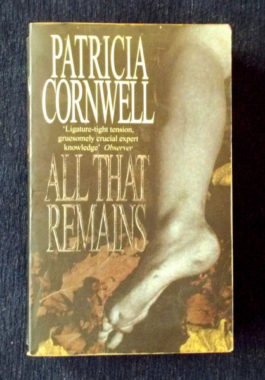 Kay Scarpetta III. In Richmond, Virginia, young lovers are dying. So far, four couples in the area have disappeared, only to be found months later as mutilated corpses. When the daughter of the president's newest drug czar vanishes along with her boyfriend, Dr. Kay Scarpetta knows time is short. Following a macabre trail of evidence that ties the present homicides to a grisly crime in the past, Kay must draw upon her own personal resources to track down a murderer who is as skilled at eliminating clues as Kay is at finding them...
Kay Scarpetta III. In Richmond, Virginia, young lovers are dying. So far, four couples in the area have disappeared, only to be found months later as mutilated corpses. When the daughter of the president's newest drug czar vanishes along with her boyfriend, Dr. Kay Scarpetta knows time is short. Following a macabre trail of evidence that ties the present homicides to a grisly crime in the past, Kay must draw upon her own personal resources to track down a murderer who is as skilled at eliminating clues as Kay is at finding them... -
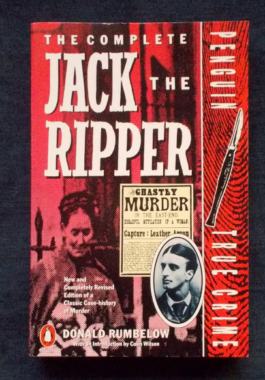 With the advantage of access to some of Scotland Yard's most confidential papers, Donald Rumbelow lays out all the evidence in the most comprehensive summary ever written about the Ripper. Rumbelow, a former London Metropolitan policeman, and an authority on crime, has subjected every theory – including those that have emerged in recent years – to the same deep scrutiny. He also examines the mythology surrounding the case and provides some fascinating insights into the portrayal of the Ripper on stage and screen and on the printed page. More seriously, he also examines the horrifying parallel crimes of the Düsseldorf Ripper and the Yorkshire Ripper in an attempt to throw further light on the atrocities of Victorian London.
With the advantage of access to some of Scotland Yard's most confidential papers, Donald Rumbelow lays out all the evidence in the most comprehensive summary ever written about the Ripper. Rumbelow, a former London Metropolitan policeman, and an authority on crime, has subjected every theory – including those that have emerged in recent years – to the same deep scrutiny. He also examines the mythology surrounding the case and provides some fascinating insights into the portrayal of the Ripper on stage and screen and on the printed page. More seriously, he also examines the horrifying parallel crimes of the Düsseldorf Ripper and the Yorkshire Ripper in an attempt to throw further light on the atrocities of Victorian London. -
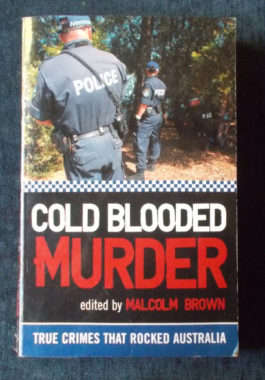 The true crimes that rocked Australia...Why do some people cross the threshold from rational behaviour to cold blooded murder? How can they do it? What motivates or activates that ability? Malcolm Brown and other award winning journalists examine the most cold blooded killings in modern day Australia. In this volume: The Murder of John Newman, M.P.; The Murderous Rampage of Danny Karam's Gang; The Bodies in the Barrels, Snowtown; The Murder of Margaret Tobin; Retribution in Wollongong: Paedophilia's Chain Reaction; Murder on Sydney's Northern Beaches; The Serial Infanticide of Kathleen Folbigg; The Murder of Maria Korp; The Spear-Gun Killer John Sharpe; Bumbling Matricide - The Murder of Margaret Wales-King and Paul King; Sef Gonzales - Getting Around the Problem of Poor Marks. Illustrated with black and white photographs.
The true crimes that rocked Australia...Why do some people cross the threshold from rational behaviour to cold blooded murder? How can they do it? What motivates or activates that ability? Malcolm Brown and other award winning journalists examine the most cold blooded killings in modern day Australia. In this volume: The Murder of John Newman, M.P.; The Murderous Rampage of Danny Karam's Gang; The Bodies in the Barrels, Snowtown; The Murder of Margaret Tobin; Retribution in Wollongong: Paedophilia's Chain Reaction; Murder on Sydney's Northern Beaches; The Serial Infanticide of Kathleen Folbigg; The Murder of Maria Korp; The Spear-Gun Killer John Sharpe; Bumbling Matricide - The Murder of Margaret Wales-King and Paul King; Sef Gonzales - Getting Around the Problem of Poor Marks. Illustrated with black and white photographs.



